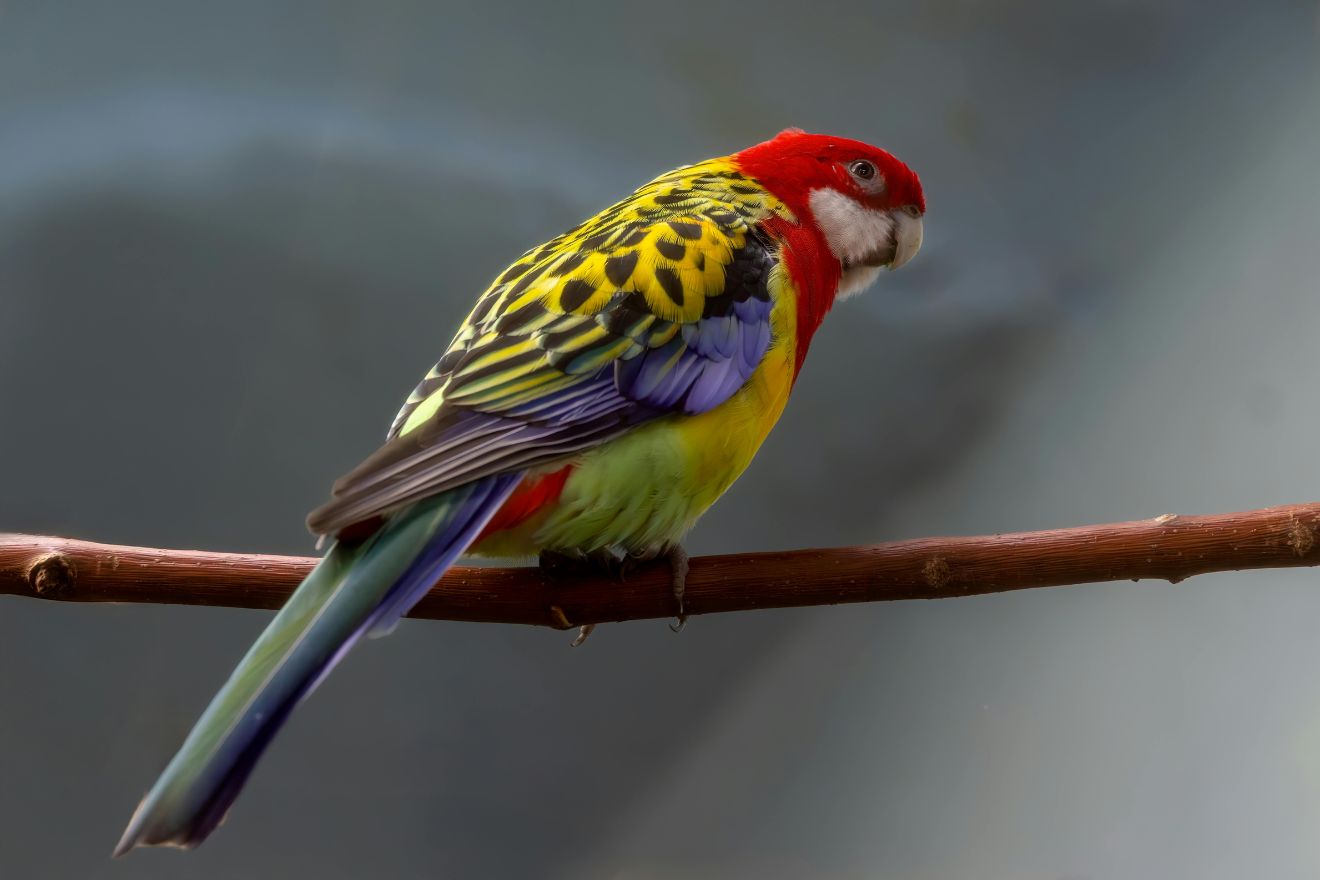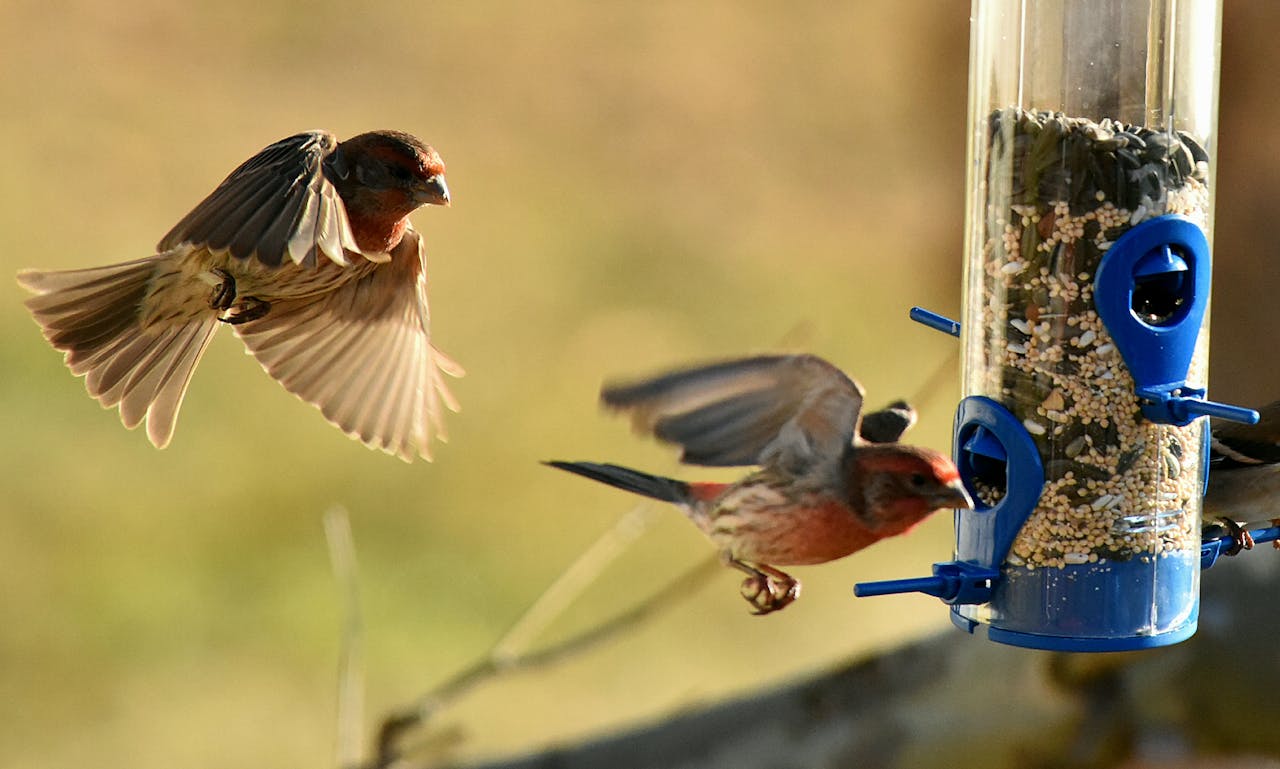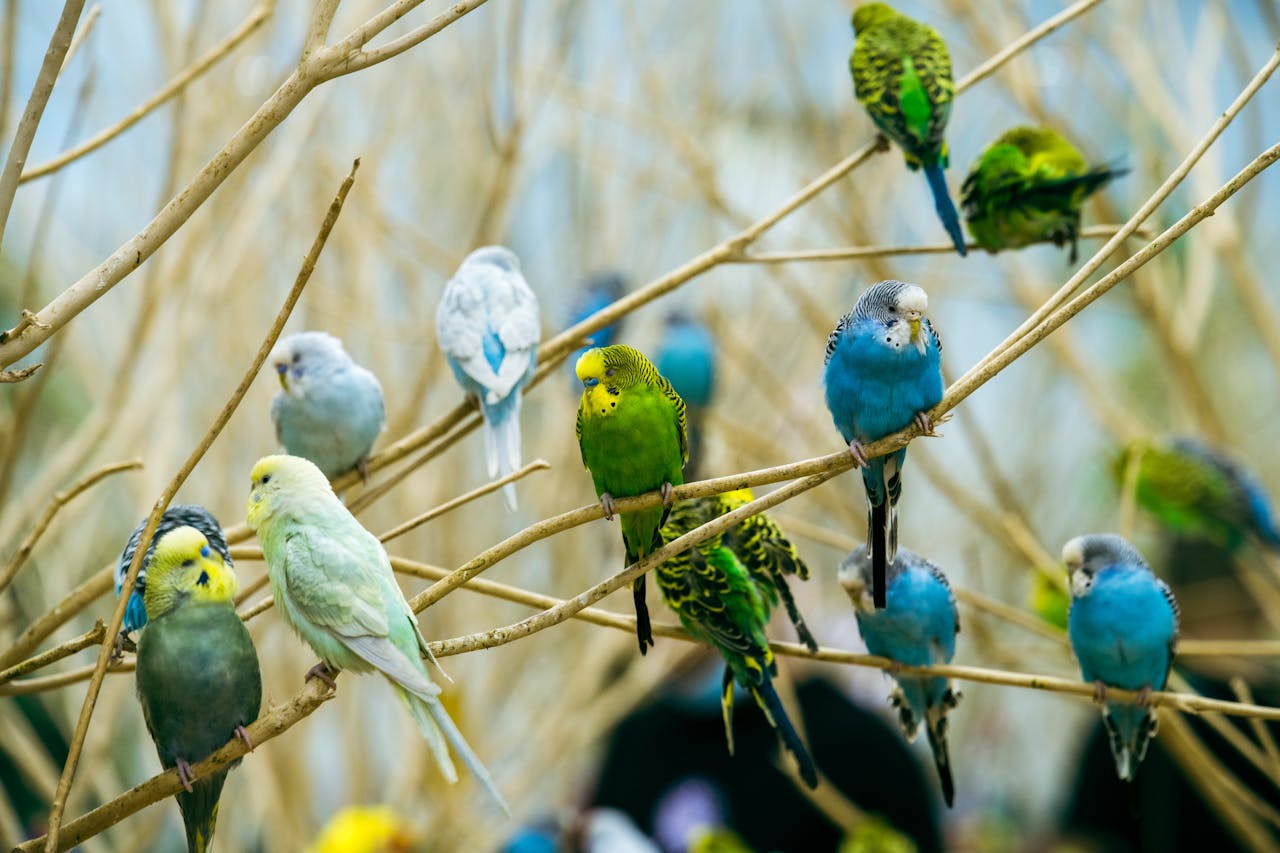The Rosella Parakeet is one of the most stunning parrots, admired for its dazzling colors, playful nature, and lively personality. Native to Australia, these birds bring both beauty and joy into homes, making them a favorite among bird lovers worldwide.
While they may not be great talkers like some other parrots, their melodic whistles, intelligence, and curious behavior make them truly unique companions.
Table of Contents
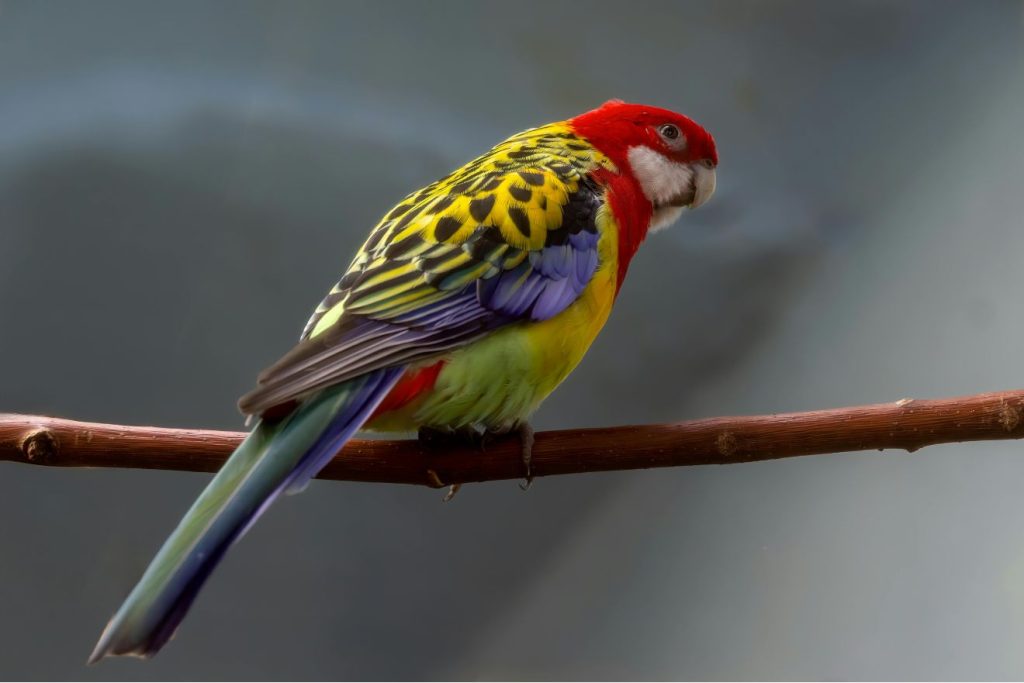
Introduction
The Rosella Parakeet, also known as the Rosella, is a strikingly beautiful bird native to Australia and its surrounding islands. With their vibrant plumage, lively personalities, and unique whistling abilities, Rosellas have become popular among bird lovers worldwide.
Although they are not as famous as Macaws or African Greys, Rosellas have their own special charm, making them a fascinating choice for those seeking a pet bird that’s both colorful and spirited.
Origin and Natural Habitat
Rosellas originate from Australia, Tasmania, and New Guinea, where they thrive in woodlands, forests, coastal shrubs, and even suburban gardens.
They are commonly seen flying in pairs or small groups, feeding on seeds, fruits, and blossoms. In the wild, their bold colors help them blend beautifully with their natural environment.
Appearance and Physical Traits
Rosellas are medium-sized parakeets, typically measuring 10 to 14 inches (25–35 cm) in length with long tails and vibrant feather patterns. Their plumage varies depending on the species:
- Crimson Rosella – Bright red with blue cheeks and wings.
- Eastern Rosella – Yellow breast, red head, green back, and white cheeks.
- Pale-headed Rosella – Soft yellow head with light blue wings.
- Northern Rosella – Striking black, yellow, and white mix.
On average, Rosellas live 15–20 years in captivity, though with excellent care, some may reach 25 years.
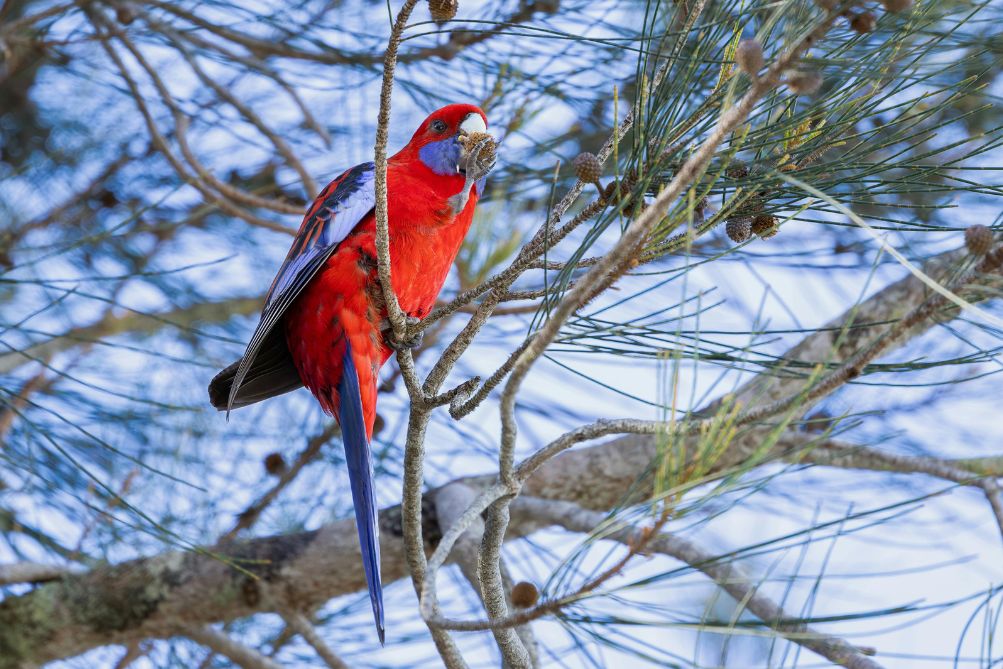
Personality and Unique Traits
Unlike African Greys or Amazon Parrots, Rosellas are not known for advanced talking ability, but they are exceptional whistlers and can mimic tunes with surprising accuracy.
They are playful, curious, and active birds, but tend to be less cuddly than Cockatiels or Lovebirds. Rosellas enjoy companionship but can also be independent, sometimes preferring to entertain themselves.
Choosing a Rosella as a Pet
Rosellas are best suited for owners who appreciate birds for their beauty, whistles, and active behavior rather than their talking ability.
They require space to fly, mental stimulation, and patient handling. Beginners can keep Rosellas, but they do best with owners who are willing to learn and invest time in building trust.
Diet and Nutrition
A balanced diet is essential to keep your Rosella healthy. Their diet should include:
- High-quality parakeet seed mix
- Pellets (formulated for parakeets)
- Fresh fruits and vegetables (apples, carrots, leafy greens, corn, berries)
- Occasional treats like sprouted seeds and millet
Avoid avocado, chocolate, caffeine, alcohol, and salty or sugary foods, as these are toxic to Rosellas.
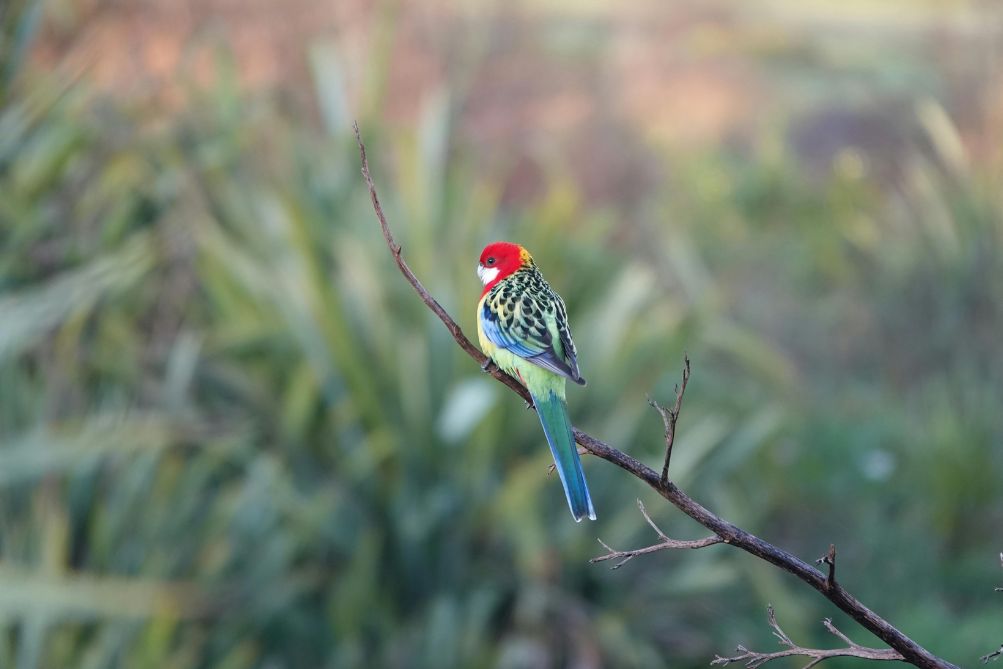
Housing and Environment
Rosellas need a large cage or aviary to accommodate their active flying habits. The cage should be wide rather than tall, with plenty of space for movement. Provide:
- Natural wood perches
- Chewable toys and foraging puzzles
- A bathing dish for feather care
They thrive in aviaries with outdoor access but should be protected from predators and extreme weather.
Grooming and Hygiene
- Bathing: Offer a shallow water dish or mist spray to keep feathers healthy.
- Beak & Nails: Provide cuttlebone, mineral blocks, and perches to prevent overgrowth.
- Cage Cleaning: Regular cleaning is essential to prevent infections.
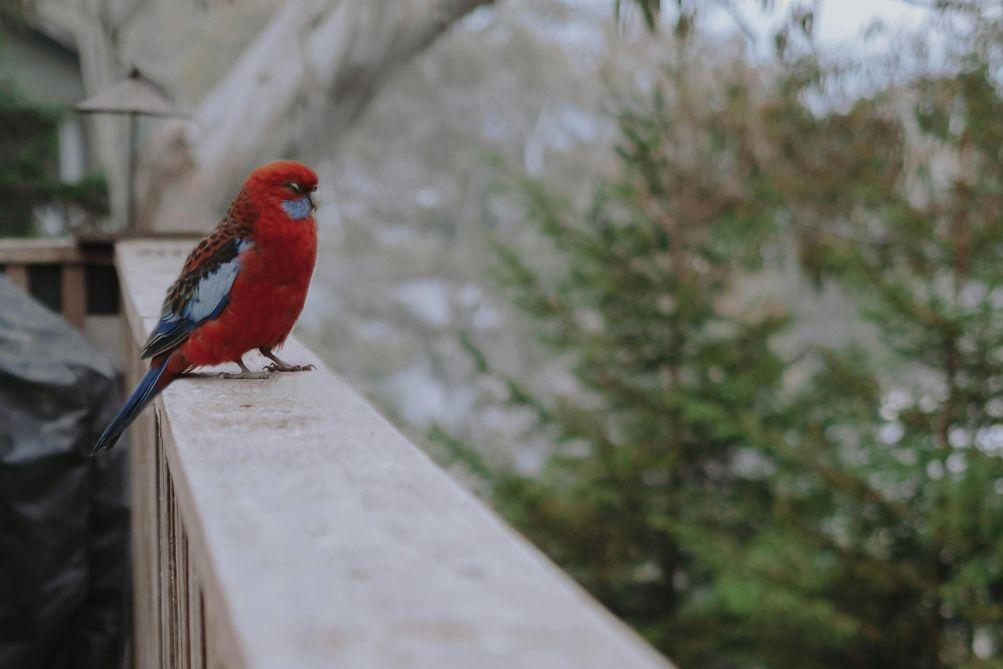
Training and Socialization
Rosellas can be trained to step up, whistle on command, and perform tricks with patience and positive reinforcement. However, they may not enjoy excessive handling. They do well with interactive play and thrive when given regular attention without being forced.
Fun Facts About Rosellas
- They are amazing whistlers, capable of mimicking tunes and bird calls.
- The Eastern Rosella is one of the most recognized parakeets worldwide due to its rainbow-like feathers.
- In the wild, Rosellas play an important role in spreading seeds, helping forests regenerate.
- They are known for their pair bonding—Rosellas often stay with the same partner for life.
Common Health Concerns
Like other parakeets, Rosellas are prone to:
- Psittacosis (Parrot Fever)
- Feather plucking (due to stress or boredom)
- Obesity (from seed-only diets)
- Respiratory infections
A balanced diet, clean cage, and regular vet check-ups are key to prevention.
Breeding Rosellas
Rosellas are cavity nesters, often breeding in hollow trees in the wild. In captivity, they require a nesting box with wood shavings. A female typically lays 4–8 eggs, with an incubation period of 18–20 days. Breeding Rosellas can be rewarding but requires experience, as they can be territorial during this time.
Signs of a Healthy Rosella
- Bright, shiny feathers
- Active and alert behavior
- Clear eyes and nostrils
- Strong appetite
- Clean feet and vent
Interaction with Other Pets
Rosellas can sometimes be territorial, especially in breeding season. While they can coexist with other birds in large aviaries, they are best kept in one pair per enclosure to avoid aggression.
Noise Levels
Rosellas are not as loud as Macaws or Cockatoos, but they do produce regular whistles, chirps, and calls. Their sounds are generally pleasant and musical, making them suitable for homes that allow moderate bird noise.
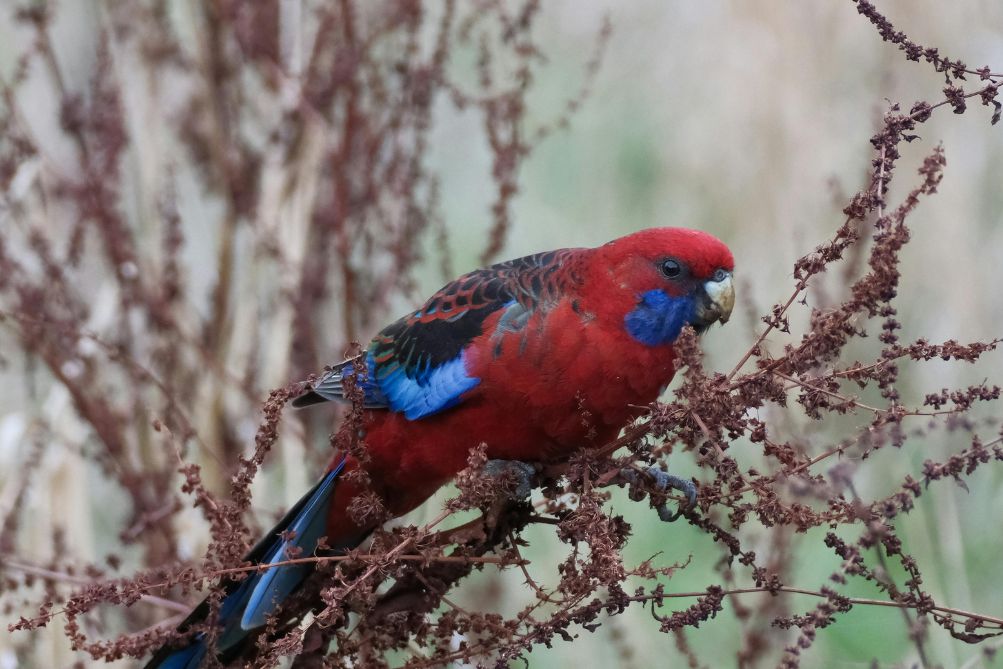
Challenges of Owning a Rosella
- They are less affectionate than Cockatiels or Lovebirds.
- Require large spaces for flying.
- Can be territorial with other birds.
- Need mental stimulation to avoid boredom.
Learn More About Bird Breeds
Rosella Parakeets are just one of many fascinating bird breeds. If you’d like to explore more, check out our guides on:
- Why Birds Make the Perfect Pets?
- Macaws, Majestic Pet Birds, jewels of the avian world
- Cockatiels for Beginners: Tips to Keep Your Feathered Friend Happy
- Lovebirds Behavior & Bonding: Secrets to a Happy Pet
- African Grey Parrots: Why They Are the Smartest Pet Birds?
- Parrotlets Care Guide: Diet, Training & Lifespan Tips for Owners
- Canaries: The Ultimate Guide to These Melodic Singers in the Bird World
- Amazon Parrots: Why They Are Among the Smartest Pet Birds
- Budgerigars: Charming, Chatty, and Colorful Pet Birds
- Finch Birds as Pets: Care Guide, Behavior, Diet, and Best Breeds for Beginners
Understanding different bird breeds helps you choose the perfect feathered friend for your lifestyle.
Conclusion
The Rosella Parakeet is a bird of brilliant beauty, lively personality, and melodic whistles. While they may not be the most affectionate or talkative of parrots, their charm lies in their independence, vibrant colors, and playful nature.
With proper care, space, and attention, Rosellas can make rewarding lifelong companions for bird enthusiasts.
FAQs
1. Can Rosella Parakeets talk?
They are not strong talkers, but they can whistle and mimic sounds beautifully.
2. Are Rosellas good pets for beginners?
Yes, with patience. They are easy to care for but less cuddly than Cockatiels or Lovebirds.
3. What is the lifespan of a Rosella?
With good care, they live 15–20 years on average.
4. Can Rosellas live with other birds?
They can be territorial; best kept as single pairs unless in a very large aviary.
5. What do Rosella Parakeets eat?
A mix of seeds, pellets, fruits, and vegetables for balanced nutrition.

